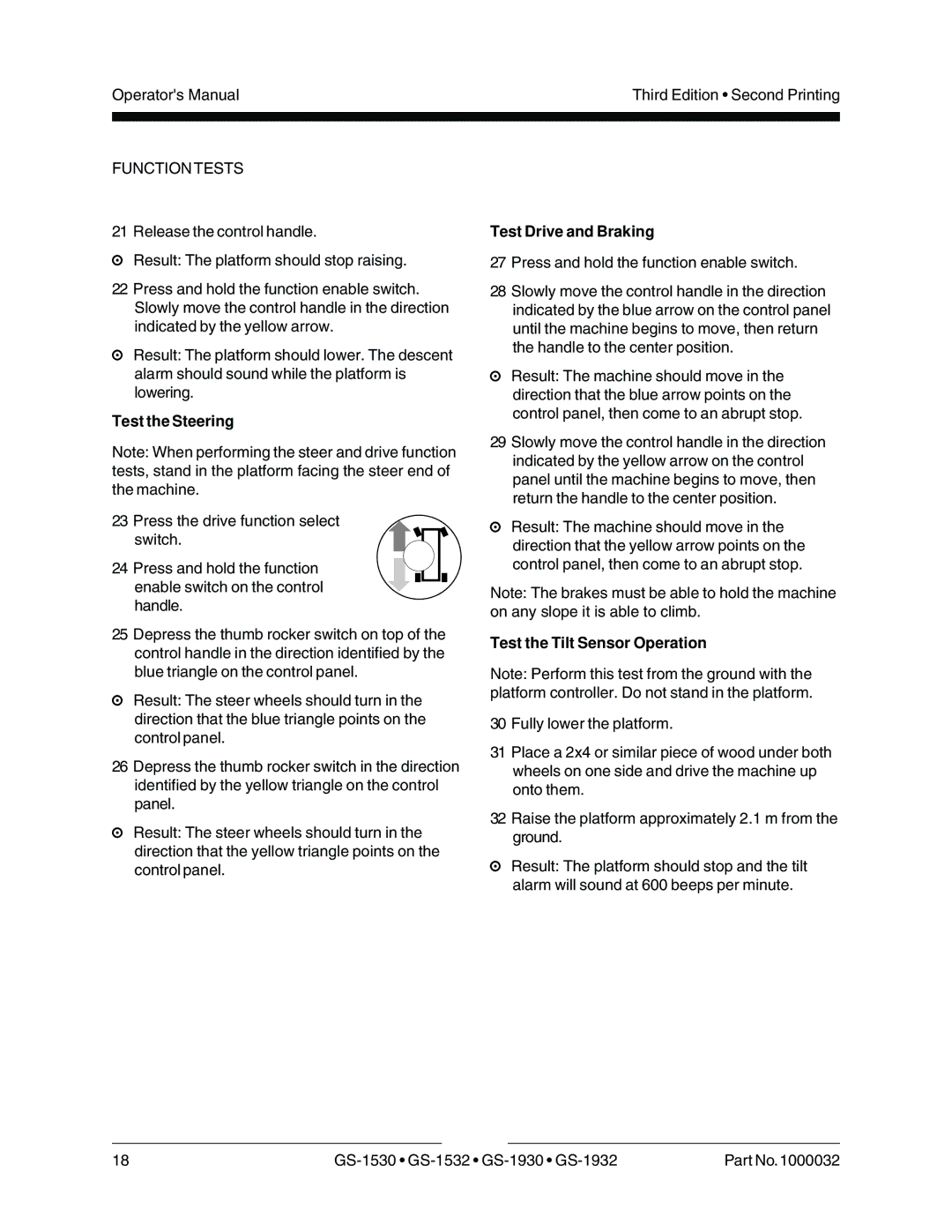GS-1932, GS-1532, GS-1930, GS-1530, CE specifications
The Genie GS series includes several electric scissor lifts, specifically the GS-1530, GS-1532, GS-1932, and GS-1930 models, designed for indoor use in various applications like construction, maintenance, and warehousing. Each model offers a robust set of features and technologies that cater to different working heights and space constraints.The Genie GS-1530 is compact and ideal for navigating tight spaces, featuring a working height of up to 15 feet and a platform capacity of 500 pounds. It is equipped with non-marking tires, making it suitable for indoor operations without damaging floors. The GS-1530 is lightweight, allowing for easy transport and maneuverability, especially in crowded job sites.
The GS-1532 offers a slightly higher working height of 15 feet, with a larger platform that can accommodate up to 500 pounds. It includes an extension deck feature that provides additional workspace when needed, ensuring operational flexibility. Its narrow width and tight turning radius enhance its usability in constrained environments.
For users needing greater reach, the GS-1930 boasts a working height of up to 19 feet and a platform capacity of 500 pounds. It is designed with advanced battery technology for extended run times, enabling operators to work longer hours without needing a recharge. The GS-1930 can also quickly be transported between job sites or moved within larger facilities due to its compact design.
The GS-1932 further expands the capabilities with a larger platform and similar height of up to 19 feet. It features an innovative control system that allows for easy operation, even in complex settings. With its auto-levelling capabilities, the GS-1932 is equipped to handle uneven ground, making it versatile for various applications.
The CE versions of these models are tailored to meet European standards for safety and performance. They include features such as lowering speed control and emergency stop buttons, ensuring operator safety in various work environments. All models are designed with durability in mind and come with a range of maintenance-friendly features.
In conclusion, the Genie GS series showcases advanced engineering, user-friendly technology, and impressive lifting performance, making them suitable for a wide range of indoor applications. Their compact designs, combined with significant platform capacity, ensure that they meet the demands of modern workplaces. Whether for maintenance tasks or construction projects, the Genie GS models provide reliable solutions tailored to the needs of users.

